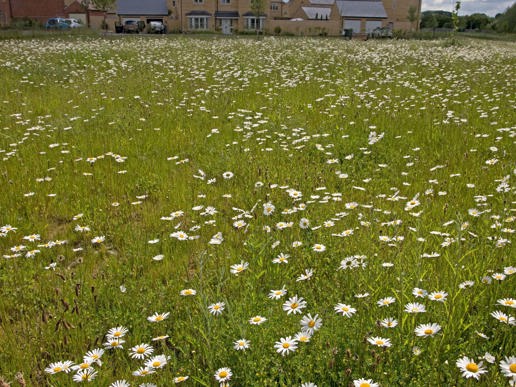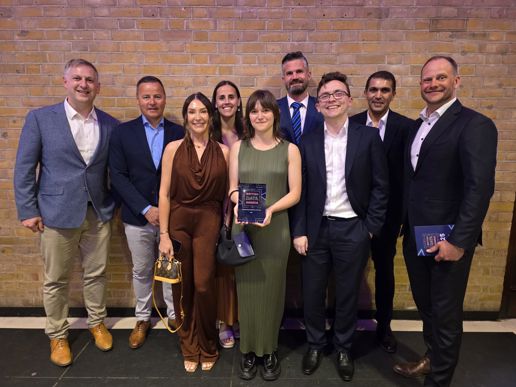How to Fund Green Space Projects

Whether you are a social housing association or care provider, securing third-party collaboration, supply chain expertise and / or external funding will be an essential first step in any green space enhancement project. But which route is best for social landlords aiming to fund green space projects that boost biodiversity, enhance amenity value, and encourage residents to reconnect with nature?
In our ‘Funding Green Space Projects Masterclass’ expert speakers from Ground Control, The Tree Council, Severn Trent and Parks for London shared practical advice and examples of best practice with sustainability leaders from the UK's largest housing associations including, Orbit, Peabody, Sovereign, Notting Hill Genesis, Clarion and Home Group. Exploring how nature-positive green space stewardship can help deliver sustainability goals and how the housing community sector can fund the delivery of projects that leave a lasting legacy in the greenspaces environment.
Here, we report on the headline takeaways, and share links to external funding resources to help those involved in the operational delivery of sustainability targets and the stewardship of housing association and care provider green spaces.
Why now is the time to fund green space projects
Maximising new and existing green assets is increasingly becoming a central part of the housing sector's decarbonisation and community-wellbeing efforts. Equally, our planet's future relies on embracing new styles of active stewardship: woodland creation, biodiversity enhancements, wildflower habitat improvements, and empowering resident engagement events all have an active part to play in making net-zero targets deliverable.
But how can the housing sector fund these vital green space projects, when without evidence of appropriate metrics, it's not possible to demonstrate a true return on investment right now? The answer can be found in a blend of third-party collaboration, supply chain partnerships and external funding.
Thank you for joining our 'Funding Green Spaces Webinar'
Third-Party Collaboration
Third-party collaboration can often plug the gap and get projects over the line. You may want to consider partnering with an enabler or third-party organisation such as The Tree Council, The Woodland Trust or Earthwatch who specialise in delivering green space projects, drawing down on their expertise and their own funding sources and galvanising volunteer groups to get projects delivered.
Sara Lom, CEO, The Tree Council recommends housing organisations make the most of the current momentum around outside space and the environment. She says,
Sara advises that housing organisations, “Explore third-party collaboration options and put that partnership to great use to pull in further collaborators, inject ideas, raise awareness, raise funds, and engage the community. The Tree Council also has a wide range of ‘Branching Out’ grants available for non-profit housing associations and care providers, open for applications now.”
When it comes to third-party collaboration, Tony Leach, CEO of Parks for London suggests that collaborators could not only bring funding but also lead the development and delivery of such projects, easing the burden for housing organisations. He says, “The Canal and Rivers Trust in association with Catalyst Housing looked at joining up their green spaces and the communities. They produced a funding application and have delivered an amazing project. This is a great example of third-party collaboration working for the benefit of people and the planet. Many charities, trusts, and foundations give you access to pots of money to deliver improvements.”
Supply Chain Expertise
Good supply chain partners love the opportunity to partner and collaborate, so lean on and work with the supply chain to develop and deliver green space project solutions. Partnership and collaboration brings innovation, the opportunity to reach a wide community of volunteers, and help to ease the financial burden not only when you plant but also for that all-important ongoing landscape maintenance as well.
Sam Jones, Housing Sector Lead at Ground Control says, “We recognise that as an expert in nature-positive landscape management it’s our responsibility to help the housing sector to deliver green space enhancement projects and specifically to take the lead on getting green-community wins over the line, now.
Working with Clarion Housing and the Milton Keynes community, we created a green space and biodiversity enhancement on a large housing estate, funded from Ground Control's own Evergreen Fund and with help from resident-volunteer and local-volunteer groups. Most recently, we have also been working with Lincolnshire Housing Partnership sustainability leads to plant wildflower meadows, enhance biodiversity, improve local amenity value, and reduce maintenance costs. Both projects demonstrate supply chain collaboration best practice and could be replicated by other housing organisations to achieve similar sustainability and community wellbeing aims.”
Ricky Dallow, Forest Creation Project Manager at Severn Trent advises that housing organisations begin talking to supply chair partners as soon as possible. He says, “What we’ve learnt on projects such as Birmingham 2022 Commonwealth Games Tiny Forests, is that we need to partner with our supply chain, specifically those who are either already doing the do, are experts in the field, or they provide the goods and services to make projects happen.
Engage with those who you're either working with or wanting to work with as soon as you can, so you can make sure the green space project vision it's deliverable. As soon as we’d developed plans for the Tiny Forests project we started work with Ground Control, who are our ground maintenance framework provider. They're already ingrained into the Severn Trent systems, how we work, so that put us in a fantastic position to kick things off right away.”
External Funding
A wide range of ‘green space’ funds are available and housing organisations can apply for grants to help deliver green space enhancement projects at pace, and scale.
As funds tend to have a very limited application timeframe and are in high demand it pays to know what you want to achieve, the required outputs that are needed, and to have a project fully costed in advance of going forward for such grants.
Sam Jones, Housing Sector Lead at Ground Control says, “For housing and care providers, it will be beneficial to undertake regular research into the range of funds available, which organisations can apply, and which projects could benefit. As funds tend to have a very limited application timeframe and are in high demand, it pays to know what you want to achieve, the required outputs, and have fully costed the programme in advance. Engagement and planning are the key to success.”
City Council and Local Authority funding, previous examples include:
- Green Space Fund
- Mayors Green Capital Grant Scheme
- Grow Back Greener Fund
- Green and Resilient Spaces Fund
- Greener City Fund
Third party organisations also have funding available; examples include:
- The Woodland Trust
- Climate Action Fund
- Awards for All
Other useful links include:
- TCPA Funding sources for green infrastructure
- DSC Funds Online – Large UK Directory of trusts & foundations
- NESTA – Rethinking Parks
- DEFRA's £640 million Nature for Climate Fund
- Severn Trent Community Fund
Tony Leach, CEO of Parks for London advises housing organisations also consider community and ‘bottom-up’ funding. He says, “If the estate has a community centre, that's rented out, some of that income could be brought back into and reinvested in the green space. There are also the tenant management organisations, residents' associations, and the likes, some of them are very well organised and could apply to charitable trusts and bring in funding for projects that way.”
Conclusion
If sustainability, biodiversity and community wellbeing goals seem daunting, it’s important to remember that you can start small and achieve early wins. One way to do so is with a Green Space Audit. When you conduct a Green Space Audit, you identify housing schemes with underutilised outdoor space that could best benefit from enhancements to provide carbon offsetting opportunities, increase biodiversity, and encourage greater use of outdoor spaces. You are then able to prioritise and tackle the projects that stand to offer the greatest value with the least effort, first.
We’ve teamed up with housing associations and care providers across the UK to achieve their sustainability goals, from woodland creation and biodiversity enhancement to empowering resident engagement events. With our collective future at stake, it’s vital for sustainability leaders to realise that action to create, maintain and sustain better landscapes is required, that today is the day to act for people, places and planet, and that even the smallest green gains can have the desired result.
With thanks to Ria Bailes, Chair, Green Spaces Advisory Board, Sara Lom, CEO, The Tree Council, Ricky Dallow, Forestry Creation Project Manager, Severn Trent, Tony Leach, Chief Executive & Ed Stannard, Development Officer, Parks for London.

A pioneering partnership to cultivate greener communities

Ground Control expands service capabilites with advanced civil engineering and road care solutions




